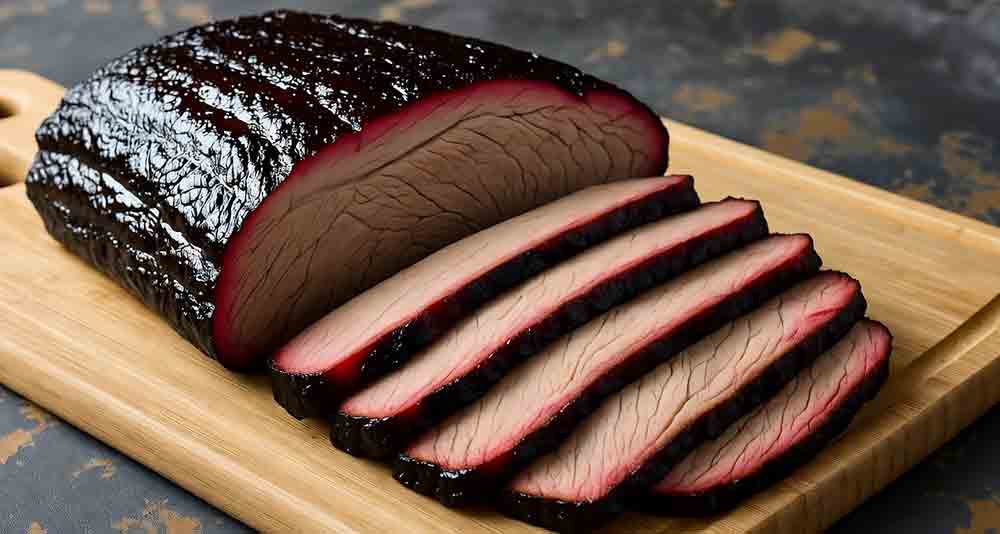
The Science Behind the Smoke Ring on Brisket
Listen up: “The smoke ring isn’t magic. It’s nitrogen dioxide plus protein chemistry,” as I’ve said in workshops. Here’s the breakdown. During the smoke, wood or charcoal combustion releases nitric oxide (NO). This gas penetrates the cold meat surface and reacts with myoglobin—the oxygen-storing protein that gives raw beef its red color—forming the pink nitrosomyoglobin we crave. Keep the brisket below 140°F for the first few hours, and that NO has time to work its magic before heat denatures the proteins.
Pro tip: Don’t overthink nitrates in your rub—they help, but clean smoke is king. Cured meats like bacon get deeper rings because of added cures, but for brisket, focus on fuel.
Step-by-Step Guide to the Perfect Smoke Ring on Brisket
Ready to smoke? Start with a full packer brisket, trimmed but not stripped bare—leave some fat for moisture. Here’s your playbook:
- Prep the Meat: Pat dry, apply a simple salt-pepper rub. For extra insurance, sprinkle a light cure like Tenderquick on the lean side and rest 10-30 minutes. Skip heavy marinades; they block smoke penetration.
- Fire Up Clean: Use plain wood chunks (hickory or post oak) or charcoal briquettes—no lighter fluid. These crank out more NO than gas or pellets. Aim for thin blue smoke: wispy, not billowing.
- Go Low and Slow: Preheat your smoker to 200-225°F. Place cold brisket straight from the fridge on the grate—fat side up for protection. Hold under 140°F internal for 3-4 hours; probe the thickest part.
- Monitor and Maintain: Use digital probes for multi-zone reads. Bump to 225°F steady once the ring sets, but wrap at the stall (160-170°F) to push through without drying.
- Rest and Reveal: Pull at 203°F, wrap in foil and towels for 1-2 hours. Slice against the grain—the ring should pop pink and proud.
Pitmaster Hacks for Brisket Smoke Ring Perfection
I’ve torched more briskets than I can count, and here’s what separates good from god-tier:
- Start Overnight: Fire low (under 200°F) for hours before ramping up—gives NO max time to infuse.
- Wood Wisdom: Hickory for bold, cherry for subtle sweet—both deliver clean combustion. Avoid green wood; it dirties the smoke and kills the ring.
- Bark Balance: Let a light crust form late; too early, and it seals out the good stuff.
- Humidity Hack: Spritz with water or apple juice mid-smoke to keep the surface moist for better penetration.
Common Mistakes That Kill Your Smoke Ring on Brisket
Avoid these pitfalls, or watch your ring fade to gray:
Hot starts: Smoking at 275°F+ rushes the meat past 140°F before NO bonds. Dirty smoke from bad fuel chokes the chemistry. And wrapping too early? It traps heat and stalls the penetration. Patience, pitmaster—it’s a marathon, not a sprint.
Final Pull: Your Brisket Awaits
There you have it—the gritty roadmap to the perfect smoke ring on brisket. Rooted in Southern tradition but backed by science, this ain’t guesswork. Fire up that offset, manage your variables, and taste the difference. Got questions? Hit the comments or check my profile for more. Now go make some smoke.